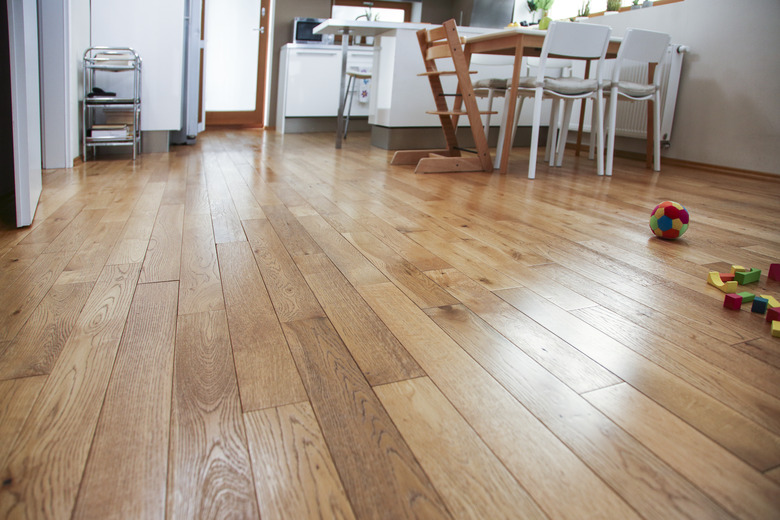How To Remove Thinset From Plywood
A type of mortar, thinset is used as an adhesive in flooring projects. It is very strong and can be trusted to keep your floors in one piece for many years. However, if you are removing tile adhesive from a plywood subfloor or replacing your flooring and need to strip the upper layers down to the base or underlayment, it is likely that you will need to remove the thinset from your plywood base layer. Fortunately, this is possible to accomplish with a bit of elbow grease and a few simple tools to remove thinset from a concrete floor or plywood floor.
Thinset Material Basics
According to Tile Outlet, thinset is used to install tile over cement, fiberboard and waterproofing membranes. Thinset makes it possible for the tiles or stones that you are using to stick to the underlayment, which is often plywood.
Thinset includes cement, so it is extremely durable and ideal for keeping flooring in place. It is also comprised of fine sand and a bonding agent like latex or polymers as well as a water-retaining agent like an alkyl derivative of cellulose.
Preparing to Remove Thinset
The first step in removing thinset from plywood underlayment is to remove the upper flooring layer. This may be tile or stone. Always use eye protection and a dust mask when removing tile or stone. It's ideal to wear sturdy work gloves and also use hearing protection to safeguard your hands and ears.
Once you have removed the upper flooring layers, clean the area thoroughly. You may wish to use a broom to sweep up debris and then use a vacuum cleaner to remove fine dust. This will make it easier to see whether you have successfully removed all of the thinset.
Removing Thinset from Plywood
Using a hammer, and a chisel if necessary, repeatedly strike the thinset in an effort to loosen its bond with the subfloor. Take care not to hit the floor too hard, as damage to the subfloor could occur. As you loosen the thinset, use a metal scraper to remove it from the floor. Keeping a garbage bag or bucket nearby to deposit loose pieces of thinset can be helpful.
Continue scraping the thinset, following gaps made where pieces have broken off. The process can be a bit tedious, but you'll likely find it's easiest to accomplish if you stick to the pattern of hammering and chiseling to loosen the material, then scraping from holes left behind from broken pieces. Continue cleaning up as you go.
Thinset Removal Blade Use
You will likely need to use a sharp-edged scraper or thinset removal blade to get at tough bits of thinset that are difficult to remove from the plywood subfloor. If you are still left with thinset that you can't get off, you can use rough sandpaper, either by hand or on a power sander, to grind down to the wood. It's important that your subfloor be as clear as possible before you attempt to replace the upper levels of flooring.
Preparing Plywood for New Flooring
Once you have removed all of the thinset, vacuum any lingering debris. It's essential that there are no lumps or bumps on your plywood subfloor, as these can make new floor installation difficult and result in an inferior finished product.
Once all debris has been removed, thoroughly wash the plywood subfloor with soap and water. Allow it time to dry; ideally, you should wait several days before installing another type of underlayment or flooring. If you do not allow the floor time to dry, mold or mildew could develop on the plywood and risk the structural integrity of the floor. In addition, mold is harmful to breathe in and might cause problems to your health, especially if you have allergies or asthma.
